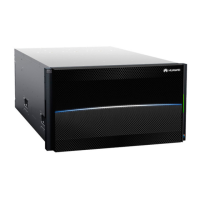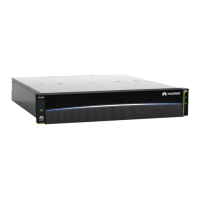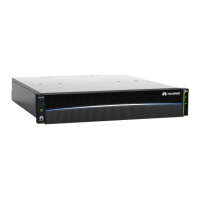– HyperMirror: backs up data in real time. If the source data becomes unavailable,
applications can automatically use the data copy, ensuring high data security and
application continuity.
– HyperMetro: synchronizes and replicates data between storage arrays, monitors
service operating status, and performs failovers. In addition, it can switch over
services and implement service load sharing when storage arrays are running.
l Disaster recovery
Disaster recovery is essential for critical applications that must continue operating even
during catastrophic disasters. Disaster recovery technologies involve many aspects such
as storage systems, application servers, application software, and technicians. From the
storage system aspect, the remote replication technology is used for disaster recovery
because it backs up data in real time.
The remote replication technology duplicates backup data in real time across sites, and
utilizes the long distance between sites to eliminate data loss. This ensures that data is
readily available on other sites if one site is destroyed.
3.3 High-Density and Multi-Service Applications
The OceanStor 2600 V3 storage system delivers industry-leading density of interface modules
in an enclosure and a flexible configuration of interface modules and disks of different types.
This design makes the OceanStor 2600 V3 storage system suitable for high-density and multi-
service applications.
High-Density Virtual Machine Applications
The virtual machine technology greatly improves application servers' utilization, and lowers
services' deployment and operating expense. Therefore, it is popular in many application
scenarios. However, virtual machines are now facing a challenge, that is, they are equipped
with an increasing number of application systems and virtual desktops, leading to the high
density of virtual machines. Compared with a single server, high-density virtual machines
generate more service data, consume more bandwidth, and pose more demanding
requirements on performance and scalability.
Excellent in both performance and compatibility, the OceanStor 2600 V3 storage system is
ideal for high-density virtual machine applications:
l The three-level performance acceleration technology provides robust storage
performance for high-density virtual machine applications.
l The proprietary Turbo Module technology significantly improves the density of interface
modules in a single enclosure. This high-density design translates into a capability to
support hundreds of virtual machines.
l Various virtual machine applications are supported.
Multi-Service Applications
It is common for one storage system to process diversified applications. However, those
applications have differentiated requirements on storage. Therefore, the storage system must
have high flexibility in performance and networking.
Each type of services has its specific requirements for storage system:
OceanStor 2600 V3
Product Description
3 Typical Applications
Issue 09 (2019-05-15) Copyright © Huawei Technologies Co., Ltd. 14

